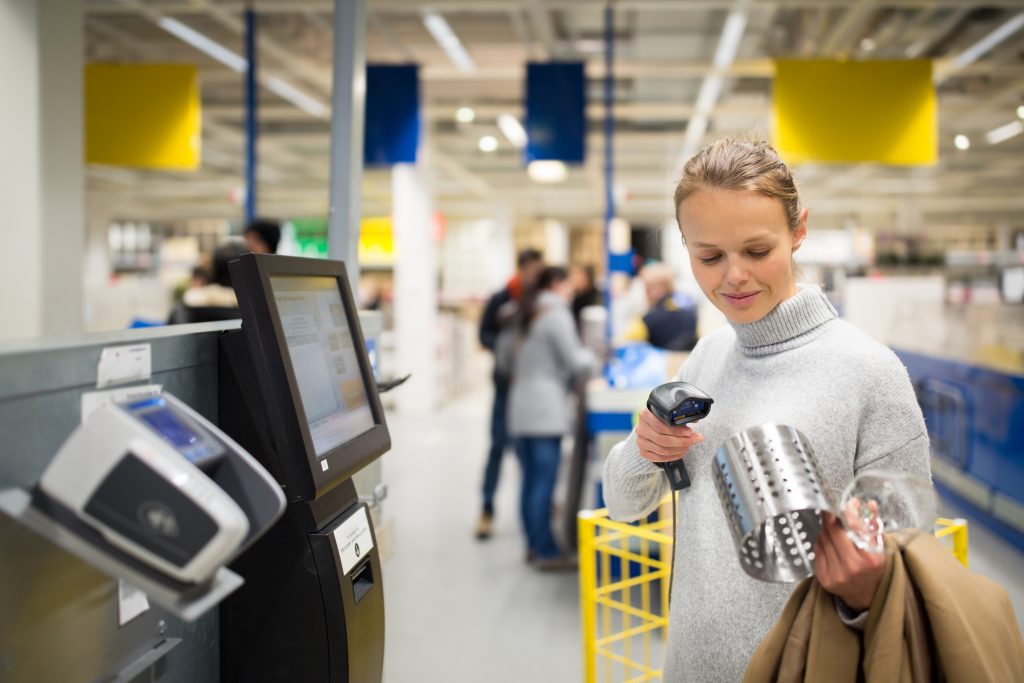When addressing retail theft, most people have an image of someone sneakily putting items into a bag and leaving the store. Although this may be one of the most common shoplifting tactics, another theft frequently utilized is theft at self checkout lanes.
Emerging in the 1990s, self checkouts offered shoppers a quick avenue for paying for their goods. And offered shoplifters an avenue to discreetly shoplift with much less risk.
According to a 2015 study conducted by criminologists at the University of Leicester, one (1) million self checkout transactions were examined, resulting in $850,000 worth of goods which left the store without being scanned.
Preventing theft at self checkouts is a difficult task and one that is often utilized by criminals because they are easily able to say that they forgot to ring an item up.
In order to prevent this type of theft from occurring, retailers should consider implementing these four things:
Have an Employee Stationed at the Self Checkout Area
When shoplifters attempt to steal through self checkouts, they are expecting an easy process since they are in control of scanning the items. There is also less guilt because they don’t engage with a person.
Having an employee who works solely at the self checkout area will serve as a major deterrent for shoplifters. They can offer assistance, engage the customers, and help guide customers through the self checkout system.
Check Customer Receipts at the Door
Another effective technique to thwarting theft is to review customer receipts at the door. By verifying the cart’s content with a receipt, you can assure each item has been paid for. A common self checkout theft technique is to purchase an expensive item and ring it up as something much cheaper.
For example, an expensive cut of meat can be rung up as ground meat, or an expensive, out-of-season fruit can be rung up as inexpensive bananas.
Train Employees about Signs of Theft at Self Checkout
Training employees to look for signs of theft can reduce the overall number of thefts at the self checkout.
For example, customers might pretend to scan items and then put them in their cart since there is an option to skip bagging. Simply asking them if they need assistance is often enough to deter a shoplifter from going through with the theft.
Once a potential shoplifter is aware of an employee watching them, they will often abandon any current plans to steal.
Add Surveillance to the Self Checkout Area
Public view display monitors can often be seen in self checkout areas, letting customers know they are being watched. But add more than video surveillance to this vulnerable area. By pairing suspicious POS exceptions to captured video through DIGIOP CARBON, you can identify frequent abusers and common trends.
There are several ways to deter theft at self checkout. While self checkouts lower employee costs and add convenience for your customers, it does not need to be an open door to theft.

